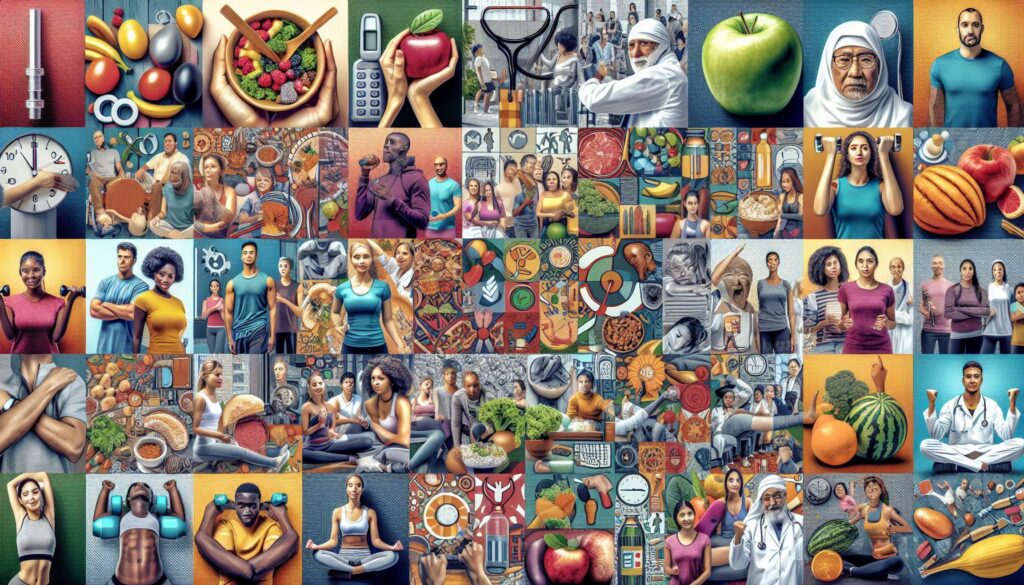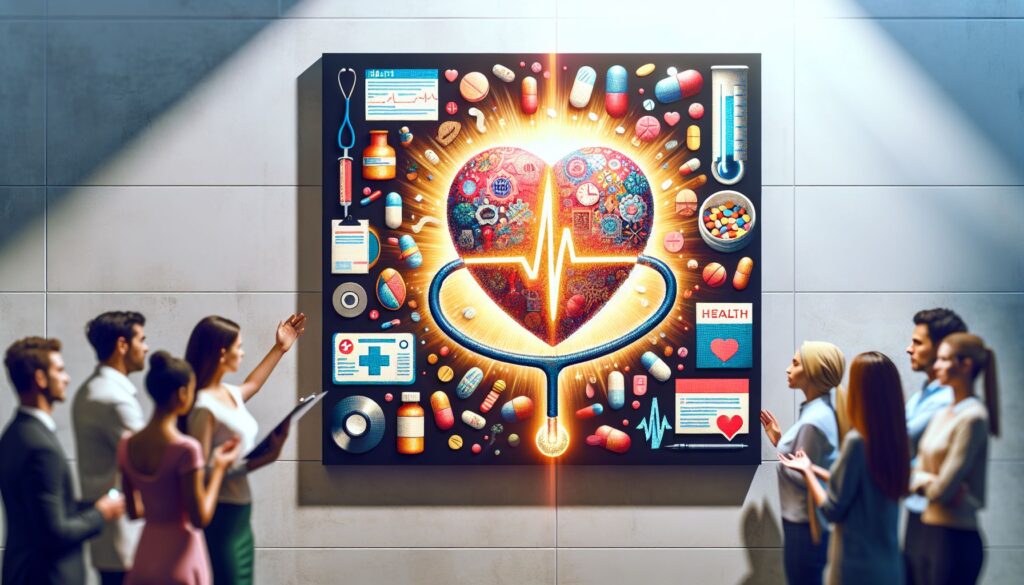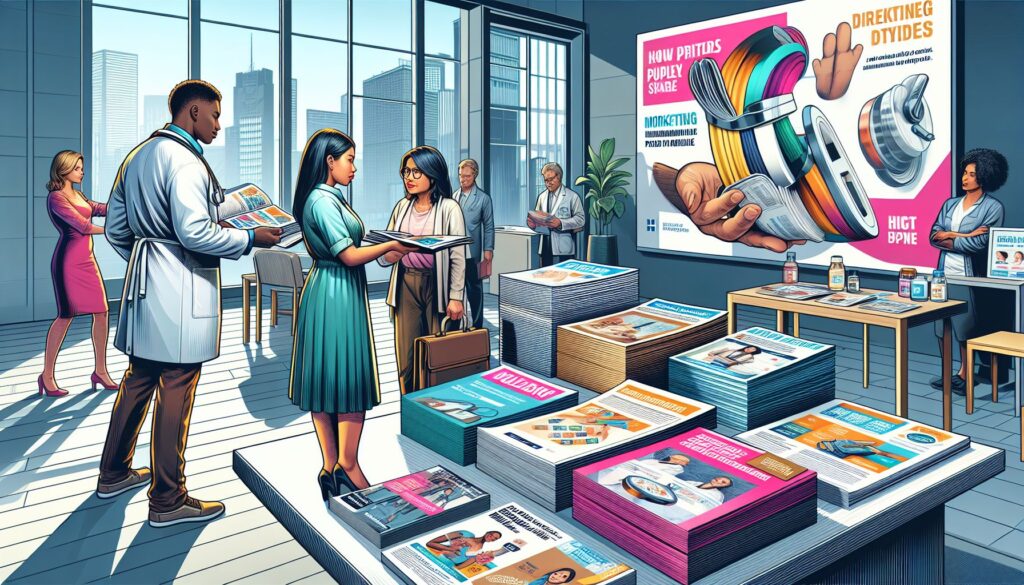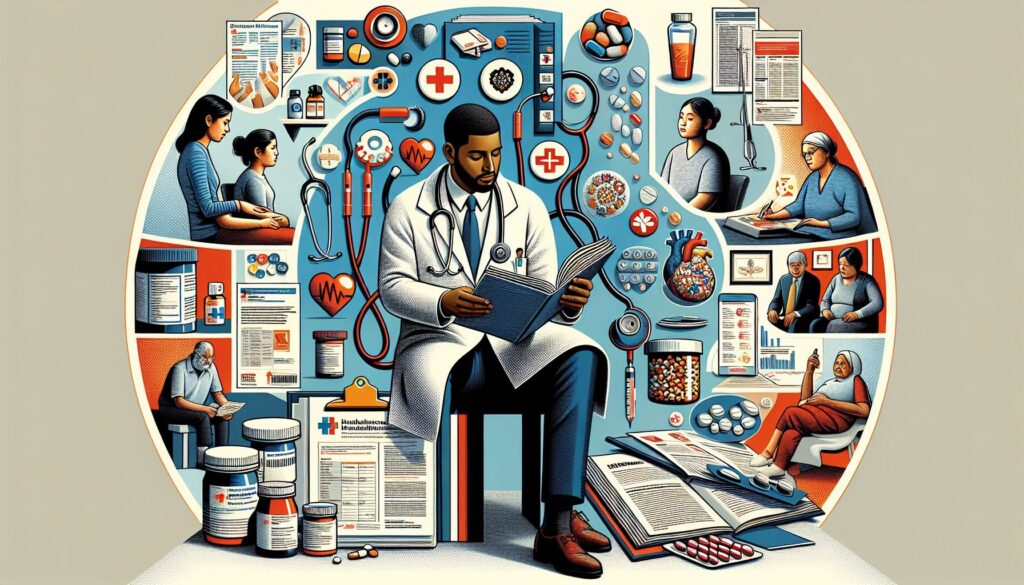In this digital age where technology dominates our lives, it can be easy to overlook the power of traditional printed marketing. However, in the health industry, where trust, credibility, and personal connection are essential, printed marketing materials can play a crucial role in reaching and engaging with your target audience. By the end of this article, you will understand why printed marketing is still a valuable tool for the health industry and how it can contribute to the success of your healthcare organization.
Introduction
To effectively market and promote your healthcare services, you need to employ diverse strategies that cater to different age groups, demographics, and levels of technological adoption. While online advertisements, social media campaigns, and email marketing are undoubtedly important elements of a comprehensive marketing strategy, it is equally vital to have a physical presence and tangible materials that can establish trust with potential patients. Printed marketing materials, such as brochures, flyers, magazines, and direct mail campaigns, can offer a range of benefits that digital marketing alone cannot provide.
The Power of Tangible Marketing Materials
One of the primary advantages of utilizing printed marketing materials in the health industry is the tactile engagement they offer. Physical materials allow potential patients to interact with your brand on a more personal level. Holding a brochure or flipping through a magazine creates a sense of connection that cannot be replicated through a digital screen. Moreover, printed materials provide a tangible reminder of your healthcare services, keeping your organization at the forefront of your audience’s minds.
Establishing Trust and Reliability
The health industry is built on trust and reputation, and printed marketing materials can contribute to the establishment and reinforcement of these essential elements. When a potential patient receives a high-quality brochure or pamphlet, it creates an impression of professionalism and reliability. By investing in well-designed print materials, you demonstrate a commitment to excellence and attention to detail. This can significantly enhance your credibility, making potential patients more likely to trust your services and choose you over your competitors.
Catering to Different Audiences
Not everyone consumes information in the same way or through the same channels. While the younger generation may be more receptive to digital marketing, many older individuals still prefer printed materials. By incorporating printed marketing into your overall strategy, you can reach a wider audience, ensuring that no one is left behind. By providing brochures and pamphlets in your waiting area or distributing printed materials within local communities, you can engage with potential patients who might not be active on social media or spend much time online.
Versatility and Creativity
Printed marketing materials offer endless opportunities to showcase creativity and design prowess. Unlike digital marketing, where space is often limited, printed materials allow you to fully unleash your creative potential. From stunning images to captivating content, you can design brochures, flyers, or magazines that truly stand out and leave a lasting impression on your audience. By combining vibrant colors, high-quality printing, and engaging copy, you can create unique designs that represent your healthcare organization’s personality and values.
The Personal Touch of Direct Mail Campaigns
In the health industry, establishing personal connections with your audience is paramount. While digital marketing provides convenience and can reach a wide audience, it often lacks the personal touch that direct mail campaigns offer. Direct mail allows you to send personalized messages directly to potential patients, making them feel valued and acknowledged. Whether it’s a simple postcard or a more elaborate package, direct mail campaigns enable you to create a memorable experience that digital efforts simply cannot replicate.
Measurable and Cost-Effective Marketing
One of the main concerns when investing in any marketing strategy is the return on investment (ROI). Printed marketing materials often provide a better cost-per-impression value compared to other forms of advertising. By targeting specific demographics and utilizing direct mail, you can measure the reach and effectiveness of your campaigns more accurately. For example, you can track responses to direct mail campaigns by including unique phone numbers or promotional codes, providing valuable data to assess the success of your efforts. Combining printed marketing with digital strategies can also create a synergistic effect, amplifying the overall impact of your healthcare organization’s marketing efforts.
Conclusion
In a world dominated by digital marketing, it’s easy to forget the value of printed materials, particularly in the health industry. By incorporating printed marketing into your strategy, you can establish trust, credibility, and personal connections with potential patients. The tactile engagement and lasting impression offered by physical materials make them an effective tool for reaching a wide audience, including those who may not be active online. Print materials provide an opportunity to showcase creativity and design prowess, allowing your healthcare organization to stand out from the competition. Additionally, direct mail campaigns offer a personal touch that digital efforts often lack, making potential patients feel valued and acknowledged. By blending printed marketing with digital strategies, you can achieve a comprehensive and powerful marketing campaign that maximizes your ROI and drives long-term success for your healthcare organization.
So, don’t overlook the power of printed marketing in the health industry. Embrace it and unlock the endless possibilities it offers to connect with your audience, establish trust, and grow your healthcare organization.…










